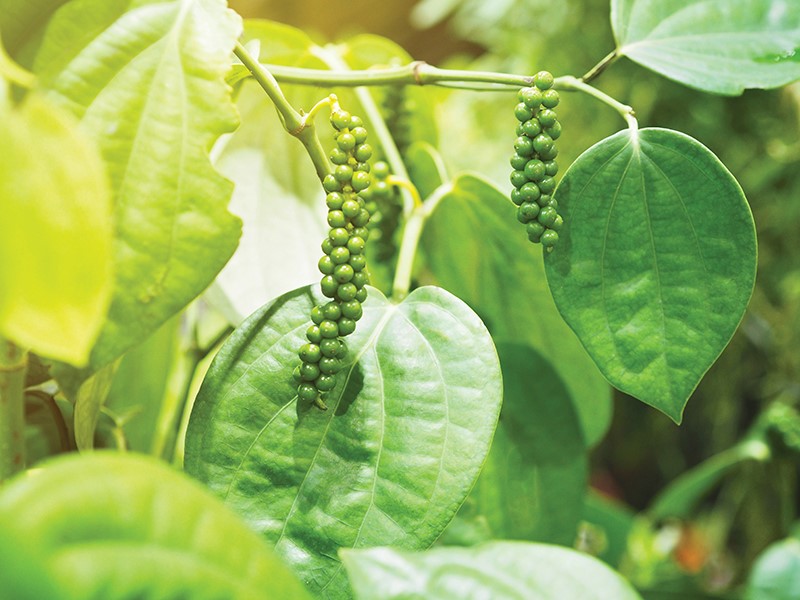

Peppercorn, or Piper nigrum, does not come in the form of traditional corn like the popular food that comes on a cob. Instead, peppercorn comes in a form that people wouldn’t necessarily suspect: a woody, perennial, flowering vine.
Native to Southeast/East Asia, black peppercorn is the world’s most traded spice. That is quite the claim to fame considering there are thousands of spices across the world. An important part of the economy in antiquity, the spice trade was one of the first examples of widespread commerce. Spices, which come from either the seed, fruit, root or bark of a plant, are much different than herbs, which come from the leaves of plants, making them easier to transport.
Easily propagated by cuttings, a peppercorn plant takes years to bear its first set of fruit. From its tiny yellow-white flowers on pendulous spikes come the round fruits, which must be harvested in a certain way in order to produce the true black peppercorn. The pendulous spikes hold many fruits on them, like a cluster of grapes.
When a few of the fruits begin to turn red, it is time to harvest the green fruit. The green fruit are cooked ever so slightly to break the cell walls which then releases an enzyme that turns the fruit black during the drying period. Once the fruit has shriveled and dried, it is referred to as black peppercorn. The black peppercorn gets its flavour/spicy attributes from a chemical compound called piperine, which is much different from capsaicin, the chemical that gives chili peppers their spicy heat.
Easily grown in tropical to subtropical climates, Piper nigrum prefers full sun to part shade and will need consistent watering to establish. Once established it can tolerate a wide variety of soils so long as they are well drained. It does not like to be excessively dry and will not survive flooding. It is a trailing or climbing vine, and therefore suitable for large planters, hanging baskets, or on trees with rough bark, which it uses to cling to while it climbs. Tendrils that touch the soil will root themselves, increasing stability.
In Camana Bay, Piper nigrum can be found in the large pots outside the entrance of Dart's offices at 89 Nexus Way.

About the author
Shannon Schmidt is the Horticulture Manager at Dart’s Arboretum Services Ltd. Joining Dart in 2012, Shannon previously worked in parks, public gardens and tourism properties, among others. Originally from the Finger Lakes region of New York State, Shannon loves island life, spending time paddleboarding around the canals and mangroves, in the sea, and spending time outdoors with her two energetic Boston Terriers Nollie and Ebbie and her equally energetic partner Chase! Shannon holds a Bachelor of Science in Recreation, Park and Tourism Management from The Pennsylvania State University and a Diploma in Horticulture from the Longwood Gardens Professional School of Horticulture, and loves spending time swinging in a hammock, with her favourite smoothie from Jessie’s Juice Bar and reading material from Books & Books.